

Change can be stressful for cattle, and stress and sickness go hand in hand. Cattlemen often can’t avoid changing environments and new experiences, but they can make them more comfortable.
Stress is one of the biggest indicators for how well a calf will perform at the feedlot, says Dan Thomson, chair of the Animal Science Department at Iowa State University.
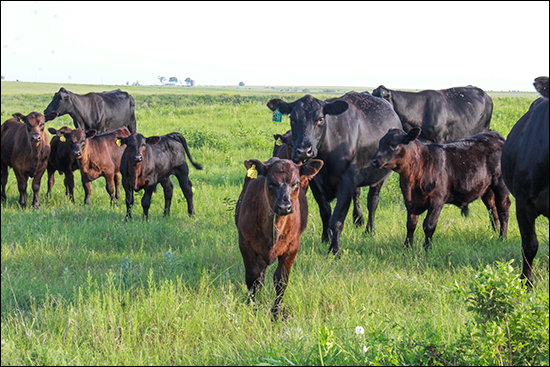 “Calves will have a better transition from the ranch to the feedyard if they are docile and aren’t bouncing off the rails when they get to the yard,” Dan Thomson says. “They need to understand that human beings are there to help them.” |
“There’s two reasons why animals get sick, either an overwhelming dose of a pathogen or a suppressed immune system,” Thomson says. “Any type of stress — whether it’s heat stress, lack of nutrition or aggressive cattle handling — sets off the same mechanisms that are immunosuppressive in the calf’s body.”
That’s why it is important to make cattle feel comfortable when they make a big change, he says. “Helping them feel good about their new home, new surroundings and new caregivers is imperative.”
Preparation is key
It starts with helping cattle understand their relationship with the rancher.
“What our goal should be is to help cattle understand that we are caregivers,” Thomson says. “Build trust with the animals by being out and moving around.”
It is important to build the trust early, as cattle are programmed to hide any weaknesses from predators, he explains.
“Cattle are a prey species. The predator determines weakness, and that’s the animal they attack,” Thomson says. “If the cattle don’t understand that we’re part of the caregiving team, they assume we’re a predator.”
He encouraged ranchers and cattle producers to spend time around their cattle and work with them.
“Calves will have a better transition from the ranch to the feedyard if they are docile and aren’t bouncing off the rails when they get to the yard,” Thomson says. “They need to understand that human beings are there to help them.”
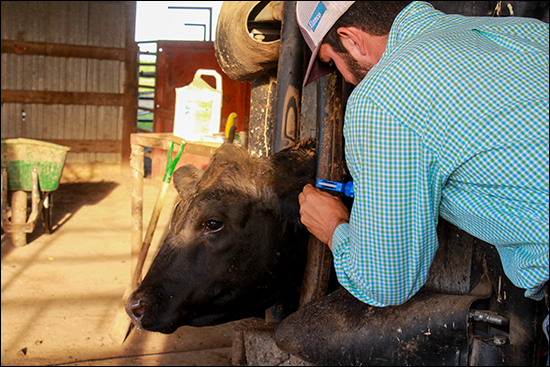 Implanting is one more chance cattle have to encounter the cattle feeder. |
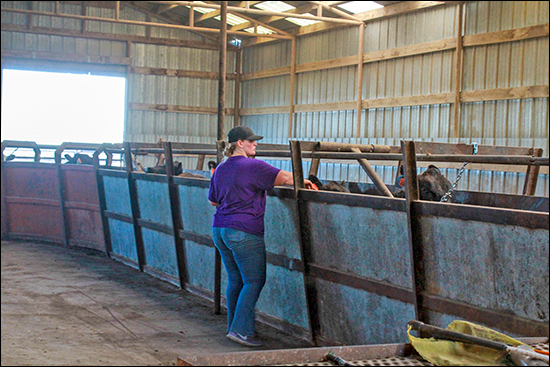 At Tiffany Cattle Co., calves get a custom vaccine designed specifically for microbes at the Herington, Kan., facility. |
Two of the most stressful events in a calf’s life are castration and dehorning, so he recommends performing those practices early in the calf’s life, when it is less stressful.
“Not having to castrate and dehorn upon arrival to the feedlot leads to better health,” he says.
When the cattle arrive at a new location, it can be confusing, and they might not know where to look for feed and water, Thomson says.
“Preconditioning is huge,” he says. “They need to know that feed comes out of a bunk and water comes out of a tank.”
If cattle are too stressed to eat, it could lead to a cycle of sickness and loss of appetite.
“There’s an old saying that goes: ‘Sick cattle don’t eat, and cattle that don’t eat get sick,’ ” Thomson says. “If we don’t do something to alleviate the stress, then cattle don’t eat. If cattle don’t eat, they get sick. If they get sick, we have increased deaths.”
Mike Collinge, owner of Collinge Ranch, Hamilton, Kan., says preparing cattle before arrival is a significant part of their success in the feedyard. His operation offers custom grazing for other producers. Many cattle are put-together sale-barn groups, so Collinge places a high priority on vaccination protocols and time spent on grass.
“When they get here, they are in pretty good shape. Being on grass for 90 days really helps their health quite a bit,” he says, noting the longer period gives the calves time to build their immune system. “They’ll be ready to face the feedlot challenge better if their immune system is in good shape, and it just takes time.”
The protocol he uses for his own calves includes at least three rounds of vaccinations, Collinge shares. “We also fenceline wean them all, which is really, really low stress.”
He weans in November or December, and the calves remain on his operation for seven to eight months on grass before they go on feed. Keeping calves on pasture all the way until the feedyard gives them good results.
Once they arrive
After the calf makes its journey to the feedlot, the responsibility shifts to the cattle feeder.
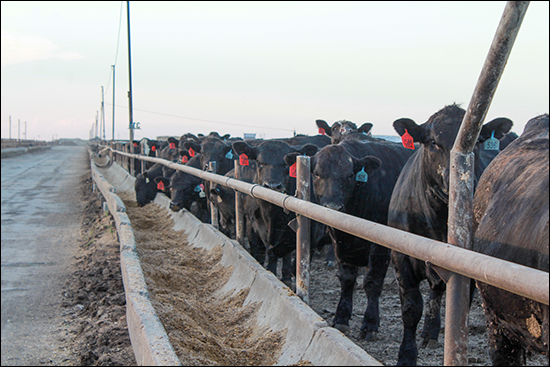 In general, cattle that stay on feed stay healthy, so that's the No. 1 goal. |
Shane Tiffany, co-owner of Tiffany Cattle Co., Herington, Kan., says he believes in creating an environment where his employees are satisfied, and that will show in how they work with the cattle.
“I hope our staff would say that Tiffany Cattle Company is a place where they feel empowered, where they have their own niche and their own opportunities to grow and succeed,” Tiffany says. “That culture allows me to do my job better because I don’t have to micromanage a bunch of other divisions. I trust the job’s getting done, and I can focus on what I need to focus on.”
Thomson says there are several things feedlots can do to ensure a less stressful transition.
“It all starts at unloading by having someone there to greet the cattle,” he says. “This person needs to be giving them some direction to a pen that the calves can lay down and be comfortable in. We’ll actually put a lead rider out in front of the herd to lead them to their home pen.”
Tiffany introduces new calves to his feedyard slowly after they are unloaded.
“If we get some cattle that are stressed, we let them rest at least as many hours as they’ve been on the truck,” Tiffany says. “So, if we get a set of calves coming in from Georgia, and they’ve been on the truck for 18 hours, we’re not going to process those for at least 24 hours.”
Higher-risk cattle are tested to see if they are persistently infected (PI) with bovine viral diarrhea (BVD) — for their good and the greater good of the whole yard.
The condition of the home pen is vital to making sure calves adapt successfully, Thomson explains. “We don’t want a lot of mud or heat. We can put some straw out to insulate and get those calves up off of the ground so they can lay down. Having water available and putting out hay is something that needs to be done between unloading and processing.”
Once the water and feed are in place, the cattle may need help finding it. Use the cattle’s instincts to help guide them.
“One thing you can do is pop the plug and wash the water tank to get some water on the ground,” Thomson says. “You can open up the petcock so that the cattle can hear the water bubbling or smell it as it flows from the top of the water tank. The best thing we can do is help them use their senses to find the water and food.”
Be cautious, and slow down when working cattle, he advises. “We want to use low-stress cattle handling, and we want to keep noise at a minimum. … We want to work the calves efficiently, but this is setting the tone for how people treat cattle.”
When Tiffany Cattle Co. handles new cattle through the processing barn, they get all the necessary shots, along with a custom vaccine.
“They will get their shots and dewormer, but, in addition to that, they get a vaccine that’s designed specifically for the microbes here at this facility,” Tiffany says. “It’s based off of nasal swabs and tissue samples from necropsies.”
Dealing with sickness
Disease is one of the most common challenges in the feedlot, and early detection is critical, Thomson says.
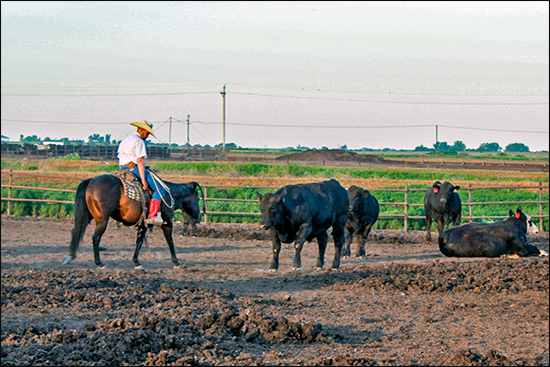 At Tiffany Cattle Co., the team invests time in trying to get cattle used to being around humans. |
“This all goes back to building trust with the cattle,” he says. “Trust allows calves to show you clinical signs earlier, which relates to better case outcome responses.”
Tiffany’s crew spends a considerable amount of time getting the cattle used to a human presence.
“For the first one to two weeks that they are here, one of my employees will go into their pen once a day,” Tiffany says. “It’s all about getting them to come up to the bunk to eat and to view us as their friend. When they do get sick, they won’t mask their symptoms, and we can better identify which animals need help and get them that help quicker.”
If a calf does get sick at the feedlot, the team takes immediate action. A matter of hours can make a huge difference in a treatment outcome, Tiffany says.
Getting them out of the pen helps with the physical exam, and then it’s time to follow the protocols on when to treat, Thomson says. If calves are not forthcoming with their symptoms, there are other ways to tell if there might be a problem.
“If we have depressed intakes within that first one to two weeks, then we’ve got something going wrong in that pen,” Thomson says. “We need to do something with the sick cattle or something to adjust those cattle.”
Having a relationship
Building trust with cattle is important, but so is building a relationship between producer and feedlot owner.
“Communication is key,” Thomson says. “The more information relayed between the feedlot and the producer, the better.”
It’s a two-way street.
“The producer can tell the feedlot how the cattle have been treated before they arrive,” Thomson says. “They can communicate the nutrition plan they used for their cattle, along with vaccination and deworming protocols. That helps a feedlot operator know what kind of plan to use once they arrive.”
The feedlot can also provide valuable information back to the rancher, he adds.
“On the flip side, the feedlot producer can be giving information back to the producer,” Thomson says. “They can tell them things such as health information or things they have been seeing with the cattle, good or bad. They can also share carcass information like closeout efficiency and other things.”
The Tiffanys use the relationships with their ranchers and the local veterinarians.
“We’ll work with them to get their vaccination program tied in with ours here,” Tiffany says. “We feel very strongly that we can only build on the foundation that’s been set at the ranch level. So, if we can have a say in that foundation so that they can continue on here, then that would be the best scenario.”
Thomson has observed a positive shift in the industry.
“I have noticed that more and more people are starting to adopt low-stress cattle-handling techniques, preconditioning their calves and taking responsibility for the animal they are producing,” Thomson says. “They are taking pride in the animal they are producing.”
Feeders are adjusting cattle handling and training, and mortality rates are decreasing in response.
“I encourage people to continue to learn and employ these practices, because they’re making a big difference in our industry,” Thomson says.
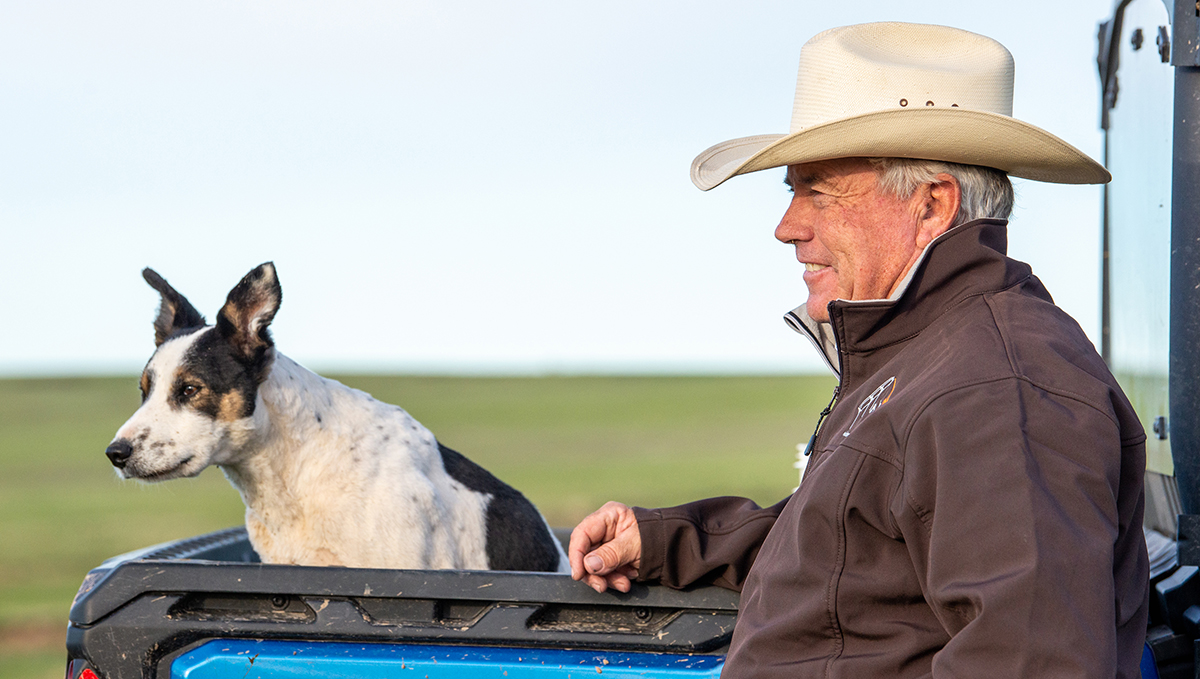
Monitoring performance with a competitive mindset earns Wyoming family CAB honors.
See article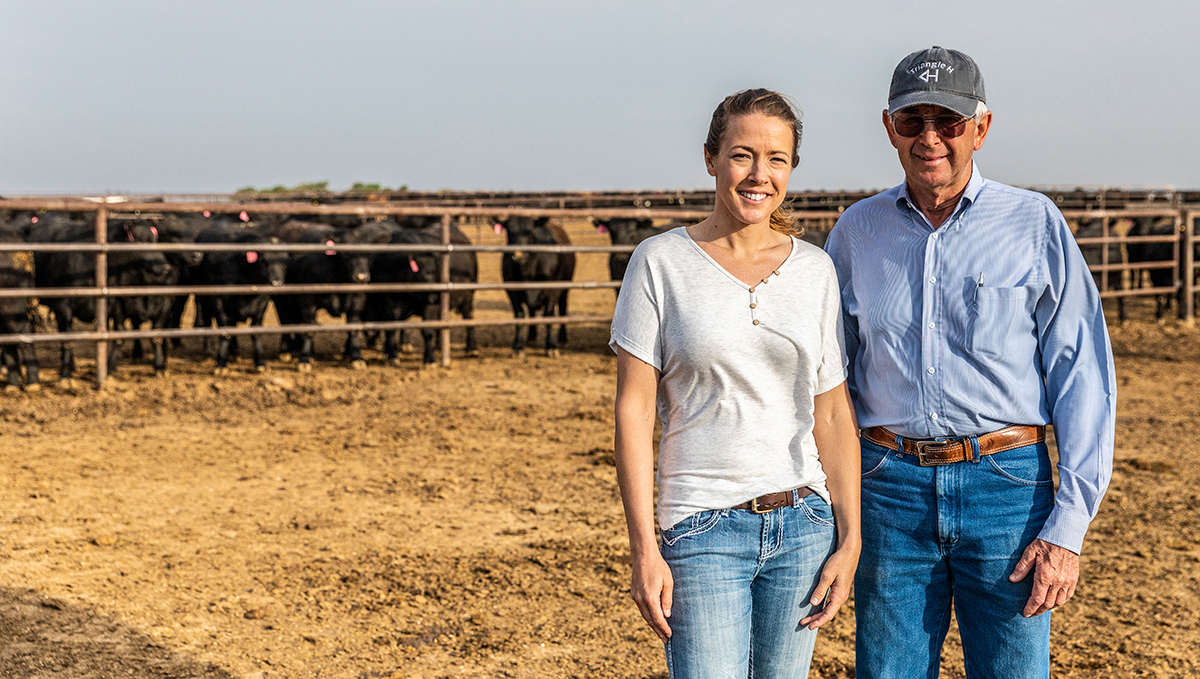
Focus on quality, customer service earns Triangle H duo the CAB Feedyard Commitment to Excellence award.
See articleCopyright © 2022 · All Rights Reserved · My Website